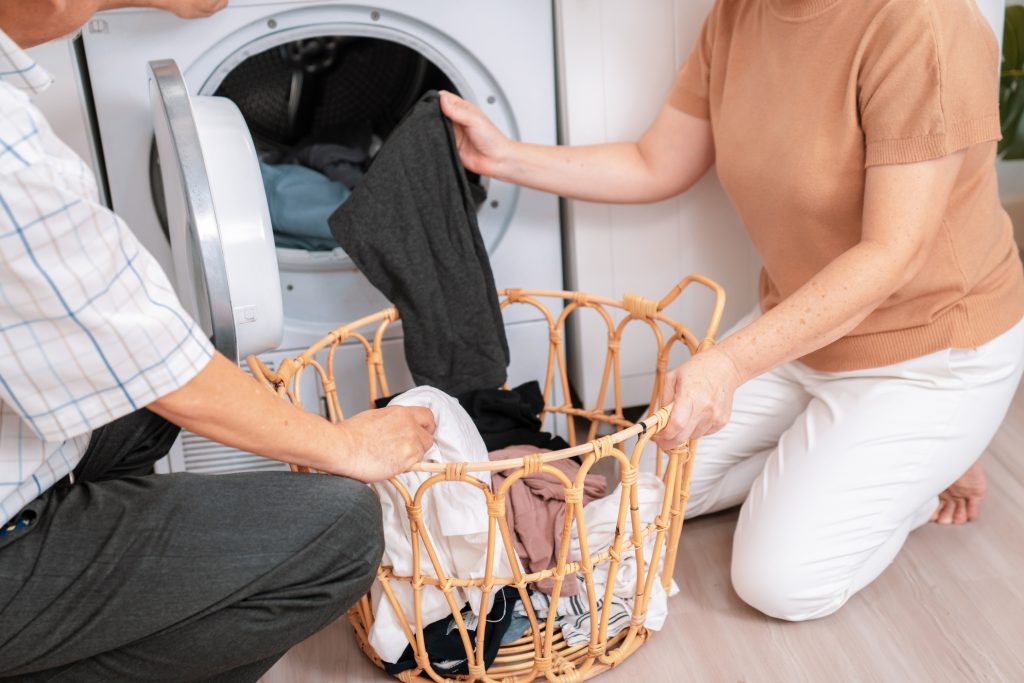
Do Washing Machines Have Magnets Inside Them?
It might surprise you to learn that washing machines do indeed have magnets inside of them. In fact quite a few of the functions connected to washing machines rely on magnetism in some form.
If we’ve got your interest, keep reading to find out exactly where, how and why magnets are used in washing machines.
Which Parts Of The Washing Machine Rely On Magnets?
Be prepared to be amazed, as we look into which parts of the washing machine rely on magnets to function. Let’s start with the most obvious;
Magnets Control The Door Locking Mechanism
Before your washer starts, it checks the door sensors to ensure the door is fully closed to ensure your home doesn’t get flooded. The mechanism used to check on the status of the door, uses magnets to operate.
There is what’s known as a reed switch which is a contactless sensor that can last for lots of opening and closing functions. In top loaders a magnet is placed onto the lid of the machine which actuates a reed sensor which is fitted to the washing machine’s frame.
When the reed switch is closed, a message reaches the control panel to tell the machine that the door is fully closed and the machine can start up. That’s why top loaders can be opened during the programme and the cycle automatically cuts out until the lid is closed again.
In front loaders (common in the UK), the magnet is placed on the door and the reed switch is mounted onto the frame of the machine close to the door lock. Once the door is closed, the control panel sends a message to lock the door and the machine can then start up.
Magnets Affect The Spinning Drum
When your washing machine drum is spinning and it turns so quietly, that’s thanks to magnets. Not just any magnets, but rare earth magnets. Rare earths are metals which when mixed in with an electrical circuit, turn into incredibly strong magnets.
They are known as neodymium magnets and they create the energy that keeps the drum on your washing machine spinning without excess vibration. It’s that lack of vibration that keeps the spinning so quiet and it’s all thanks to magnetism.
Magnets Control The Water Flow
If you’ve ever wondered how the washing machine knows when to stop the flow of water into the machine, it’s all down to magnets. It uses a similar system to the door mechanism – a reed float level sensor.
In this case the reed switch is fitted into a float along with a magnet. The float can travel up and down along with the water but when it gets to a certain level, it closes an electrical circuit which sends a message to the control board to stop allowing water in.

Magnets Are Used To Identify the Direction The Drum Is Spinning
Most modern washing machines have a drum that spins in both a clockwise and anti-clockwise direction. The appliance can detect which direction the drum is spinning because of the magnets which detect the direction and send messages to the control board.
Magnets Work In Washing Machine Dial Controls
If your washing machine has a dial to select the programme or cycle you want to use, it will also have magnets running the show. The position of the magnet sends a signal to the control board showing which programme you have selected.
These magnetised dial selectors are known as “rotary Hall effect sensors”. Which are semiconductor devices that respond to a magnetic field and can detect changes in the strength and direction of a magnetic field.
It is mounted onto a printed circuit board and the magnet is fixed onto the actual dial. As the dial is turned, the magnet turns and changes the magnetic field which is detected by the Hall effect sensor
Magnets Detect The Speed The Drum Is Spinning At
That same Hall effect sensor works in conjunction with a rotating ring magnet which is mounted onto the drum. The Hall effect sensor is mounted close to the drum and can sense the change in the magnetic field. This then sends a signal to the microprocessor which can tell if the speed is correct and regulate the motor accordingly.
Magnets Work Washing Machine Motors
If your washing machine has a direct drive DC brushless motor, it is actually a multi-phase motor with a permanent magnetic rotor. It is powered by an electronic circuit from a DC power source.
Magnets Can Soften The Water In Your Washing Machine
As if all of the above wasn’t enough, magnets are also being used to soften hard water in washing machines. If you live in an area that has hard water (and 60% of the UK and 75% of the US has hard water) there is a device that has been developed that reduces the limescale in the water using magnets.
- Der waschball is jahrzehntelange Durable and very Robust
- The Washing Ball REDUCED The Umweltbelastung at Wash and Rinse
It’s basically a load of magnets inside a hollow rubber ball which allows the water to flow through and somehow softens the water as it passes through the magnets.
It’s environmentally friendly, is very cheap and is well worth a try if you suffer from hard water. Just be sure to decrease the amount of detergent you use once you start using the “naturgut magnet washing ball” (can also be used in dishwashers too).
So there you have it, who would have thought that washing your laundry would have been so dependent on magnets? If you have any questions please feel free to ask them below.
SEE ALSO: Are There Any Low Vibration Washing Machines?
Frequently Asked Questions
Washing machines have magnets to secure the door or lid, help the drum spin, control the water flow, operate the drive motor, and work the dial controller.
Washing machines do have electromagnets in their motors. These are made from rare earth magnets (neodymium magnets).
A washing machine works by both electricity and magnetism. The motor of a washing machine consists of coils of wire wrapped around a metal core. When an electrical current is passed through these coils it creates a magnetic field that interacts with the permanent magnets in the motor.
Also, follow us on Pinterest ...




